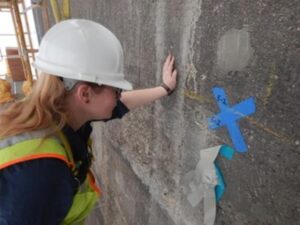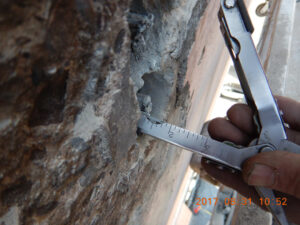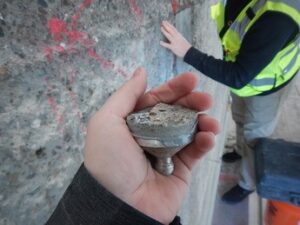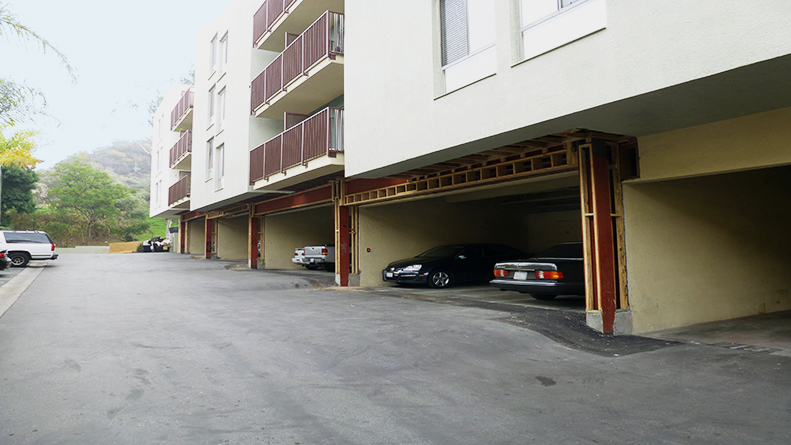New Year, New Promotions
Congratulations to all the Degenkolbers who took the next step in their careers in 2023! 🎉
The following Degenkolbers (listed alphabetically by first name) were promoted in January 2023:
- Alex Arellano, Project Engineer
- Alfred Tran, Associate Principal
- Alvaro Celestino, Principal
- Amy Inhofer, Project Engineer
- Anthony Ambrosio-Meir, Project Engineer
- Carmen O’Rourley, Project Engineer
- Cata Doughri, Project Accountant
- Christian Curameng, Design Engineer
- Dan Sloat, Associate
- Daniel Miller, Design Engineer
- David Sommer, Associate Principal
- Emily Manasyan, Engineering Administrator I
- Enrique Orozco, Designer Engineer
- Erik Moore, Associate
- Evelyn Li, Design Engineer
- Gerry Castro, Office Manager II
- Hannah Hilluby, Project Engineer
- Hannah Johnson, Project Engineer
- Kenny Huynh, Senior Project Accountant
- Lindsay Miller, Library and Records Manager
- Peter Maloney, Associate Principal
- Ryan White, Design Engineer
- Sean Wang, Accounting Manager
- Torrey Bolden, Project Engineer
- Xena Waters, Engineering Administrator III
- Xiaomi Mitsuhashi, Associate
Degenkolb’s Newest Senior Principal:
Additionally, Degenkolb extends a special congratulations to Matthew (Matt) Barnard, who was promoted to Senior Principal. Matt joined Degenkolb Engineers‘ Los Angeles office in 2001 and helped launch the firm’s new Orange County office last year as the Orange County Office Director. His expertise, leadership, and passion for the field are just a few of the many reasons that Degenkolb is glad to have him on our team.
Breaking News: City of Oakland to become the next city to implement a mandatory seismic ordinance
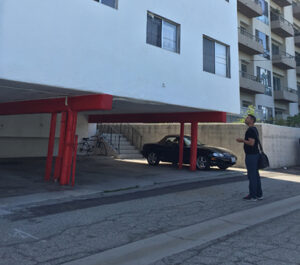 
On January 22nd 2019, the City of Oakland joined other Bay Area cities by passing a resolution to institute a mandatory soft-story retrofit program. The resolution, introduced by Council member Dan Kalb and Mayor Libby Schaaf, is designed to save lives and reduce the potential for housing displacement in Oakland in the event of a major earthquake. The legislation requires that soft-story wood frame buildings with two to seven stories, five or more residential units, and built prior to 1991, be seismically retrofitted. The new program is similar to programs already implemented in San Francisco, Berkeley, Alameda, Fremont, and San Leandro. Which types of buildings are targeted under this ordinance? What is the time frame to comply with the mandatory wood soft-story ordinance?
What does it mean if a building owner receives a seismic ordinance notification? Where can I get further information on the Oakland seismic ordinances? For information on other city seismic ordinances, please click on the Degenkolb website. If there are any further questions, please contact: Lucie Fougner, Associate Principal at Degenkolb Engineers Kirk Johnston, Principal at Degenkolb Engineers |
Examining Intense Fire Damage Gets A Second Look at Tech Conference
Laura Rice spends time observing damage to the wall
Every year, Degenkolb hosts their annual Technical Conference in San Francisco, California as part of the company commitment to life-long learning. Engineers are given the opportunity to present educational topics of their choice; new up and coming technology, lessons learned from a past project, maybe a technique that saved their client time and money.
Devon Lumbard and Laura Rice presented on their work at a parking garage in Oakland, California that was damaged from a fire at an adjacent residential property that was under construction. The fire, occurring on July 7th, 2017, was so hot it caused large portions of the exterior walls to spall and fall off the parking garage.
The team was brought in to perform visual observations and later, conducted a more detailed investigation and load testing of slabs. Laura says she “spent days (literally) on the scaffolding on the wall looking over every inch of it,” using the sounding hammer, and observing the removal process to make sure that all the damage was removed, both surface level and any underlying issues that could cause future damage.
Through their presentation, Devon and Laura discussed the difficulty in identifying the extents of damage and implementation of repairs that are required to returning the fire damaged wall to its pre damaged state. In the future, Non-Destructive Testing tools are additional options for identifying damage as well when assessing fire damaged concrete.
For more information on this project, contact Devon Lumbard at dlumbard@degenkolb.com or 510.250.1260.
Devon Lumbard observes the fire damaged wall
Seattle Engineers Share Lessons Learned at Degenkolb Technical Conference
The Seattle Group poses outside of the office
Lifelong learning is a core value at Degenkolb. Each year, our staff gathers in San Francisco at the Degenkolb Technical Conference to share lessons learned from our current projects, new trends in the engineering industry, and changing practices that may affect our clients.
Project Engineer Hee Jae Yang presented on the next big thing in building materials – Cross-Laminated Timber (CLT). CLT construction is popular in Europe and Canada, and projects are beginning to crop up in the Pacific Northwest. The Seattle team has explored CLT for two projects in the last year. Hee Jae discussed why architects and owners are shifting towards CLT, the basics of CLT design, and the opportunities to incorporate this renewable building material into more of our designs.
Design Engineer Dan Sloat teamed with Designer Josh Sizemore to outline lessons learned during a unique structural evaluation project. Working for a local aircraft manufacturer, the Degenkolb team evaluated two large-span hangar buildings that had different heights, structural systems, and building materials. Their presentation focused on how the unique structural systems were evaluated and the seismic retrofit concepts that were developed to increase life safety and reduce downtime after an earthquake.
Are you interested in learning more about these presentations? Please feel free to reach out to our engineers in Seattle at 206.262.9240.
Interns Today; Engineers Tomorrow
Every year, Degenkolb’s five offices hire a handful of interns from colleges and universities throughout the Western US. This year, Degenkolb welcomed eight interns just in time for the annual Technical Conference where Degenkolb’s practicing engineers present on a wide variety of topics, you can read more about that in a previous post. These presentations gave an early insight to the types of projects the Interns would soon be starting.
Hands on Learning
Interns in San Francisco, Oakland, Seattle, Los Angeles and San Diego have worked more than 1500 hours on a variety of projects. Ranging from structural modeling, seismic design, OSHPD compliance, masonry and wood design, SPC4D requirements, equipment anchorage, material and geotechnical testing and records and so much more, the opportunity for continued education is infinite. Further learning opportunities also included a site visit to 447 Minna Street where Degenkolb is repairing fire damage.
Kate Cuddington, the recipient of the Cal Poly Degenkolb Scholarship, has reflected on her time at Degenkolb and her project experience, “at Cal Poly, I took a Seismic Rehabilitation class and learned how to apply ASCE 41-13, so using the code and retrofit approaches for a real life building has been very illuminating!” It is part of our culture of learning to immerse interns into projects for hands on learning.
Work-Life Balance
Throughout the five offices, interns are encouraged to join in on social activities. Los Angeles is known for their group lunches and fun conversation, while San Diego becomes competitive with a little shuffleboard. In the Bay Area, San Francisco and Oakland combine forces for a weekly softball game working to take on other firms on the field. Blake Wyatt, an intern in the Los Angeles office, says “I have especially enjoyed our daily group lunches, the weekend hike for the wellness challenge, and the intern welcome happy hour!”
2017 Summer Interns
Degenkolb thanks our hardworking interns: in San Francisco, Joyce Fung and Rainbow Lin; in Oakland, Kate Cuddington and Ryan Worley; in Los Angeles, Blake Wyatt and Kevin Dang; in San Diego, Morgan Lyew and in Seattle, Andrew Young.
We wish our interns a great year back at school and look forward to welcoming several of them back in the years to come. Know a great engineering student interested in working at an award-winning firm? Check out our job opportunities page. https://degenkolb.com/careers/job_openings/
A Day to Share: Degenkolb’s 2017 Technical Conference
On May 19th, Degenkolb hosted its day-long internal technical conference. This year’s event included more than 25 sessions dedicated to sharing information on technical solutions for a range of projects. The day includes all the engineers and BIM specialists from our five offices, featured speakers, breakout sessions, team-building activities, and social events to foster personal connections.
The morning opened with, Maryann Phipps, President of Estructure and Degenkolb Alum with her presentation How to Design a Good Building. Throughout the day, session topics included projects from practice areas such as Healthcare, Construction Means and Methods, and Forensics.
Project discussions included seismic retrofits with work at the Peninsula Pipeline in San Francisco and hospital analysis and design at Seton Hospital and California Hospital. Panelists also covered the future of practice with design automation topics.
All five offices were able to bring forth their most memorable and lessons-learned projects to share with colleagues, giving an insight to the expansive and diverse technical expertise that is available at Degenkolb.
The day concluded at the Hotel Zetta with games, appetizers and drinks. On Saturday, Degenkolb hosted its 2nd annual golf tournament, inviting employees, friends and family to participate in a “Scramble” game of 18 holes.
For more information on session topics or awards, please contact Senior Principal and Group Director, Jim Malley at malley@degenkolb.com or 415.354.6419.
Congratulations to our Structural Engineering Associates award winners:
• Loring Wyllie receives the H.J. Brunnier Lifetime Achievement Award at the SEAONC Awards Dinner
• Daniel Zepeda was honored as one of the two SEAOSC “Engineers of the Year”
• David Williams collected an Award of Excellence for the Cedars-Sinai Pharmacy Exhaust Tower
• David Williams and team take home the S.B. Barnes Research Award for the work with Safer Cities Survey
• Bob Pekelnicky and team brought home the Engineering Excellence in Structural Engineering Award of Merit in the Study/Research category for
a high-rise, steel moment frame
San Francisco Hotel
City of West Hollywood Passes Mandatory Seismic Ordinance
On April 3, 2017, the City of West Hollywood joined the City of Los Angeles and the City of Santa Monica on their efforts to improve our community’s seismic resilience of their existing building stock. Degenkolb Engineers worked hand-in-hand with the City’s building department to survey more than 4,500 buildings within the city limits. From this information, the city was able to craft a comprehensive seismic program that will seismically strengthen three critically vulnerable building types in a proactive time frame.
What types of buildings are targeted by the mandatory seismic ordinance for existing buildings?
The city has developed three mandatory seismic retrofit ordinances for non-ductile concrete buildings, pre-Northridge steel moment frame buildings, and wood soft-story buildings. On April 3rd the City Council voted on the first reading to approve the implementation of the wood soft-story building ordinance. They also requested that the building department present the non-ductile concrete and pre-Northridge steel moment frame ordinance to the council by the summer of 2017. The wood soft-story building will cover buildings most often recognized as a multistory wood building with tuck under parking.
What is the time frame to comply with the mandatory wood soft-story ordinance?
The city is expected to send the first wood soft-story building notification letters by the spring of 2018. Once a notification letter is received, the building owner is required to submit a screening report and in some cases a licensed civil or structural engineer may be required to perform an evaluation. If a retrofit is deemed to be required, then the mandatory time frame to comply with the retrofit will be five years. Buildings will be prioritized based on the number of units and number of stories (As shown below):
What does it mean if a building owner receives a seismic ordinance notification for their building?
Receiving a seismic ordinance notification means that a building has been identified by a preliminary, visual examination as being potentially vulnerable to significant damage in an earthquake, and therefore targeted by a mandatory seismic ordinance. Not all buildings receiving a notification will require a seismic retrofit. It may be determined that the targeted building does not require retrofitting. If that is the case, then the owner or engineer (hired by the owner) will provide the city with suitable documentation in order to remove the building from the list. If the building is determined to be vulnerable, the services of an engineer and/or architect, and a general contractor will be required. They will then develop retrofit drawings and complete the required seismic retrofit work as required by the ordinance.
Where can I get further information on seismic ordinances in my area?
Click here for further information regarding the City of West Hollywood’s ordinance.
Click here for further information on the targeted building construction types, and their vulnerabilities and other seismic ordinances in California and the Pacific Northwest.
Click here to view our previous report on the City of Santa Monica’s recent seismic ordinance.
For questions please contact:
Daniel Zepeda, Principal at Degenkolb Engineers
dzepeda@degenkolb.com 213.596.5014
